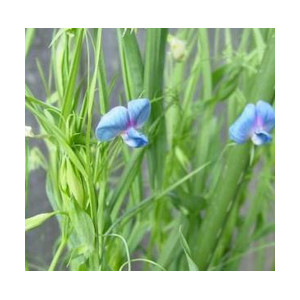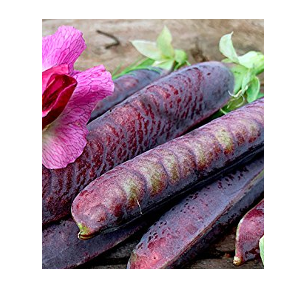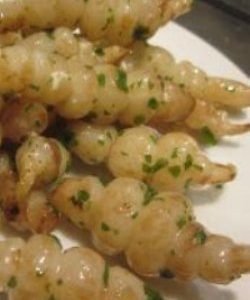Description
Key Facts
- Fantastic in Gachas Manchegas or Maltagliati recipes.
- Easy to grow.
- Takes about 4 to 5 months to grow
Delicious, lovely looking, hardy & a bit poisonous !
Even for the history alone it’s worth growing in any allotment or vegetable garden.

Also known as King Tutankhamun’s pea, blue sweet pea, chickling pea, Indian pea and white pea (Official name is Lathyrus Sativus)
- Very easy to grow in poor soil
- Height: 60-90cm
- Very pretty azure blue coloured flowers
The Greeks used it as an aphrodisiac, the Pharaoh’s used it as a present for the afterlife, the Russians gave it to their horses, it’s been banned in India…
And one of the staple diets for the poor in larger parts of Africa and the Mediterranean.
If you eat to much of it (regularly) it will poison you – but it tastes fantastic in dishes like
- Gachas Manchegas, or Maltagliati.
How to grow Grass Pea Seeds
Simply sow outside after the last frost into most types of soil – either into full sun or partial shade
Space the grass pea seeds 38 to 45 cm apart because they will grow to about 60 to 90 cm (2 to 3 feet) in height
You can either let them trail along the floor or grow them up a mesh
It is drought resistant but you will get the best results if you water them now and then. (but be careful not to over-water)
The grass pea will flow later spring to early summer – with the peas being read to harvest mid summer
SOWING ADVICE:
For best results, seeds are sown directly into the ground where required in the spring. Alternatively, sow in late winter/early spring in gentle warmth, 15-20 degrees C. Prick out into small 3 inch or 7 cm. pots and plant in final position when the plants are established.
When to harvest grass peas..
To get the best results if you wait for the peas to brown and dry on the vines – but obviously before they pop !!!
How to use..
The beauty of the grass peas is that you can either use them as an ingredient (whole but soaked) in recipes or (and a lot more fun !!) as a flour.
Because it’s grown in so many places there are loads and loads of difference recipe ideas – see below.
More information


